Genealogy
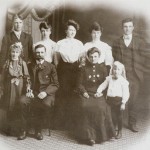 Recently, I received an email on my Ancestry account. It was from a woman named Laura Weber. Through her husband’s DNA, she was able to connect him to the Spencer side of our family, and this brings the family connections to another fork in the road. It seems that Laura’s husband, Nicholas is a descendent of Clifford Spencer, who is the son of William Spencer and Viola Fuller, and is my grandfather, Allen Luther Spencer’s younger brother. Clifford first married a woman named Annie, and they had a daughter named Ethyl Pearl. They were divorced, and he married a woman named Hanna, and they had three children, Loraine, Clifford, and Wanda.
Recently, I received an email on my Ancestry account. It was from a woman named Laura Weber. Through her husband’s DNA, she was able to connect him to the Spencer side of our family, and this brings the family connections to another fork in the road. It seems that Laura’s husband, Nicholas is a descendent of Clifford Spencer, who is the son of William Spencer and Viola Fuller, and is my grandfather, Allen Luther Spencer’s younger brother. Clifford first married a woman named Annie, and they had a daughter named Ethyl Pearl. They were divorced, and he married a woman named Hanna, and they had three children, Loraine, Clifford, and Wanda.
Ethyl Pearl always felt very much alone after her dad left, and while she grew up around her mother’s family, she never really got over losing her dad. She married a man named Claude Coleman, and they had six children, Joyce, Duane, Laura, Claude Jr, Alfred, and Lois. Her husband was not the staying kind either, and in the end, I think it might have been for the best, or at least as far as my Uncle Bill was concerned. For part of their your life, the Coleman children lived with my grandmother, Anna Schumacher Spencer, and the children went to school and helped out on the farm. It was a good life, but like their mother, they missed their dad…no matter what the circumstances of his departure.
Ethyl’s daughter, Lois married a man named Weber. He and Lois had three biological sons, and one adopted daughter. One son, Peter passed away in 1981, and their adopted daughter, 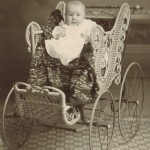 Terry passed away in 2008. The sons who are still alive are Mark and Joe. Mark married a woman named Margaret Mason. They had Nicholas (Nick), and then divorced. It is Nick’s wife, Laura, who made the connection with me, and we are both very excited about this new connection.
Terry passed away in 2008. The sons who are still alive are Mark and Joe. Mark married a woman named Margaret Mason. They had Nicholas (Nick), and then divorced. It is Nick’s wife, Laura, who made the connection with me, and we are both very excited about this new connection.
It is so amazing to me to be able to connect with yet another branch of the family. I hope to have some pictures of Lois in the future, as well as possible introduce the Weber’s to the rest of the family. I have been so excited about the family members I have found through the DNA I sent in to Ancestry. It has opened so many new doors, and there will be more in the future.
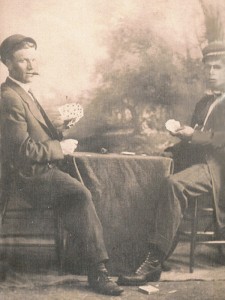 In years gone by, the choices for recreational activities were pretty limited. There weren’t any radio stations to play music for dances all the time, things like television and computers were still in the future. So, what did people do to entertain themselves. Of course, there were things like the occasional barn dance, and the county fair, but in reality, there were not a lot of choices. The saloons wee an option for the men, but not for the nice women…in fact they were embarrassed if anyone knew that their men were in the saloon at all. Not that the men were very influenced by how the women felt about it. If they wanted to go in there, they did, and that was it.
In years gone by, the choices for recreational activities were pretty limited. There weren’t any radio stations to play music for dances all the time, things like television and computers were still in the future. So, what did people do to entertain themselves. Of course, there were things like the occasional barn dance, and the county fair, but in reality, there were not a lot of choices. The saloons wee an option for the men, but not for the nice women…in fact they were embarrassed if anyone knew that their men were in the saloon at all. Not that the men were very influenced by how the women felt about it. If they wanted to go in there, they did, and that was it.
The saloon was where the men could get a drink and socialize with friends, or they could play poker. The other things that happened in the saloon, such as the womanizing and fighting, were not talked about in good moral company. That didn’t mean that all men engaged in such immoral activities, but I’m sure some did. Of course, just having those dance hall girls in the place, is enough to make most women suspect.
Poker was pretty much the card game of choice in the saloons, but maybe some of the men played it elsewhere. Back then, I doubt if the women would be caught dead playing poker, because it was probably considered a sin. These days, playing poker is considered simply a fun activity, and it is played in homes, casinos, and even bowling alleys. Lots of people play, and have a great time doing it. Times were just different back then, and sometimes I wonder if that wasn’t a better thing. There seemed to be an innocence then that we don’t even have in our grade school years in school now.
Nevertheless, I don’t think there is anything wrong with playing cards, or even poker for that matter. I play a little poker at the bowling, alley, which is much different than regular poker, in that you just draw the cards when you get a strike or spare. Personally I’d rather play, Cribbage or Spades, over poker in most situations, but in all reality, I’m not much on playing cards anymore. I suppose that is because there is too many other activities to occupy the mind these days. I have to think I like that better than I would have the days when cards were the main entertainment.
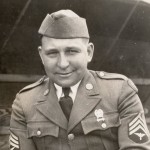 My dad, Aunt Laura, Uncle Bill, and Aunt Ruth had a half brother, of whom I was barely aware until recent years. I think I had heard about him, but somehow it really didn’t register in my mind, but rather seemed like someone who was somehow connected to someone else. While going through my dad’s pictures, we came across a picture of a man named Norman. We were pretty sure this was Dad’s half brother, and then when I was looking through my Uncle Bill’s family history books, our suspicions were confirmed. He looks like a very nice man, and I became very curious about him. I began researching him on Ancestry.com, and found that there was relatively little information, or at least that I could be sure of by documentation. I knew that he was born on May 25, 1906 in Flambeau, Wisconsin, and that he passed away on October 26, 1977 in Richmond, Virginia. Since his birthday was coming up, I decided that I wanted to showcase him for his birthday…but, it was looking like it was going to be a very short story. I decided to ask some of the people on the Spencer Historical and Genealogical Society’s Facebook page to see if they could help. What an amazing idea that turned out to be. I quickly got a response from David Lawrence, and he had a wealth of information to give me.
My dad, Aunt Laura, Uncle Bill, and Aunt Ruth had a half brother, of whom I was barely aware until recent years. I think I had heard about him, but somehow it really didn’t register in my mind, but rather seemed like someone who was somehow connected to someone else. While going through my dad’s pictures, we came across a picture of a man named Norman. We were pretty sure this was Dad’s half brother, and then when I was looking through my Uncle Bill’s family history books, our suspicions were confirmed. He looks like a very nice man, and I became very curious about him. I began researching him on Ancestry.com, and found that there was relatively little information, or at least that I could be sure of by documentation. I knew that he was born on May 25, 1906 in Flambeau, Wisconsin, and that he passed away on October 26, 1977 in Richmond, Virginia. Since his birthday was coming up, I decided that I wanted to showcase him for his birthday…but, it was looking like it was going to be a very short story. I decided to ask some of the people on the Spencer Historical and Genealogical Society’s Facebook page to see if they could help. What an amazing idea that turned out to be. I quickly got a response from David Lawrence, and he had a wealth of information to give me.
He told me that Norman was married to a woman named Elizabeth, but it didn’t appear that they ever had children. He mentioned that he had been stationed in Oahu, Hawaii in World War II. Then he said that he had worked for the Virginia State Police as a radio technician in 1850. I had found Uncle Norman’s grave on FindaGrave.com a while back, and a reference to Elizabeth that I couldn’t confirm on Ancestry.com. This all gave me new motivation to find out more. I first went to FindaGrave.com and found Elizabeth’s grave, but all it said was Elizabeth H…no last name, and called her, simply his wife. I found that a bit odd, but then I started thinking about the Virginia State Police, and decided that maybe I could get more information by calling them. This also turned out to be an amazing idea. I was quickly connected to the Human Resource Records Department, and within just a few minutes they read me all of the information on my uncle’s employment card…and there was more that just his employments history. His parents names, which I already knew, were listed, but also Elizabeth’s last name, which was Hoover. They had his service years, August 25, 1925 to March 31, 1950, when he retired at the rank of captain. They also had, of course, his employment years, August 17, 1953 to June 1, 1971, when he retired at the age of 65. I couldn’t believe all this information had come my way, by simply reaching out to two key sources. It was an exciting day indeed.
I was curious as to what Uncle Norman might have done as a radio technician, so I did some research on that occupation and found that they design, set up, operate and maintain equipment and radios used for transmitting. This tells me that he probably worked on s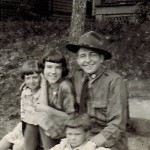 ystems for broadcasting information to and from the police officers of the Virginia State Police. I’m quite sure that the equipment he worked on back then would almost seem like a home built ham radio these days, compared to the equipment the police departments use today, and in todays world, his job might be a mix of those old radio technicians, and the work my cousin, Tim Fredrick, who is a half grand nephew of Uncle Norman’s, if I have my terminology right. I’ll bet he saw a lot of changes in that industry over his years of being involved in it. I wish I could have talked to him about it, but that was not to be. Today would have been my Uncle Norman’s 108th birthday. I’m really sorry I never got to know him, but happy birthday in Heaven Uncle Norman.
ystems for broadcasting information to and from the police officers of the Virginia State Police. I’m quite sure that the equipment he worked on back then would almost seem like a home built ham radio these days, compared to the equipment the police departments use today, and in todays world, his job might be a mix of those old radio technicians, and the work my cousin, Tim Fredrick, who is a half grand nephew of Uncle Norman’s, if I have my terminology right. I’ll bet he saw a lot of changes in that industry over his years of being involved in it. I wish I could have talked to him about it, but that was not to be. Today would have been my Uncle Norman’s 108th birthday. I’m really sorry I never got to know him, but happy birthday in Heaven Uncle Norman.
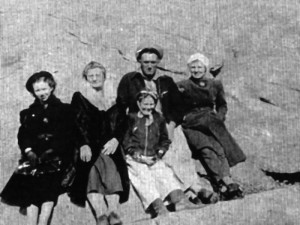 You don’t grow up in central Wyoming without making at least one and more likely several trips to Independence Rock. It is a favorite for school field trips, and family outings as well…or at least it was when I was growing up. My family has climbed all over that rock looking at the names of the immigrants who passed by their on their way west. They would carve their name in the rock, as a way of saying, “I was here, in this place, on this date in history.” They had no way of knowing if anyone would ever see their name or care to wonder about who they were, but they wanted to mark their presence in time anyway. Lots of people have done that over the years, although these days people often use spray paint on the rocks or walls of a place, or even a sharp object on the stalls of a bathroom, which I have never been able to figure out. I mean, who cares about that. It’s just weird. Of course the difference is that the people who do that now are looked on with disdain, for defacing public property, but the immigrants heading to the old west were viewed as pioneers making their mark in history. I have to agree with that analogy, because graffiti is not like a historical record carved into a rock after all.
You don’t grow up in central Wyoming without making at least one and more likely several trips to Independence Rock. It is a favorite for school field trips, and family outings as well…or at least it was when I was growing up. My family has climbed all over that rock looking at the names of the immigrants who passed by their on their way west. They would carve their name in the rock, as a way of saying, “I was here, in this place, on this date in history.” They had no way of knowing if anyone would ever see their name or care to wonder about who they were, but they wanted to mark their presence in time anyway. Lots of people have done that over the years, although these days people often use spray paint on the rocks or walls of a place, or even a sharp object on the stalls of a bathroom, which I have never been able to figure out. I mean, who cares about that. It’s just weird. Of course the difference is that the people who do that now are looked on with disdain, for defacing public property, but the immigrants heading to the old west were viewed as pioneers making their mark in history. I have to agree with that analogy, because graffiti is not like a historical record carved into a rock after all.
Independence Rock is located in southwestern Natrona County along Highway 220, a little 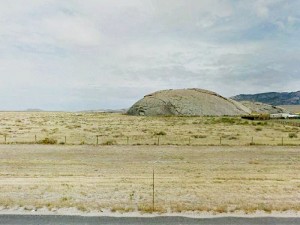 over 55 miles from Casper, which is why many Casperites have been there so many times. It is a huge granite rock approximately 130 feet high, 1,900 feet long and 850 feet wide. It basically sticks up in the middle of an otherwise quite flat area on the prairie, with the mountains in the distance. I suppose that was why the pioneers decided to carve their names there. After a long day of travel, it was a good place to camp, with one side well protected and a great place to keep a watchful eye out for Indians or outlaws. The children could play on the rock, and that would put them out of their mothers’ hair while dinner was prepared. Some people say that it looks like a huge whale in the middle of the prairie, and I can say I must agree. Because of all the names carved in the rock, it was dubbed “Register of the Desert” by Peter DeSmet in 1840.
over 55 miles from Casper, which is why many Casperites have been there so many times. It is a huge granite rock approximately 130 feet high, 1,900 feet long and 850 feet wide. It basically sticks up in the middle of an otherwise quite flat area on the prairie, with the mountains in the distance. I suppose that was why the pioneers decided to carve their names there. After a long day of travel, it was a good place to camp, with one side well protected and a great place to keep a watchful eye out for Indians or outlaws. The children could play on the rock, and that would put them out of their mothers’ hair while dinner was prepared. Some people say that it looks like a huge whale in the middle of the prairie, and I can say I must agree. Because of all the names carved in the rock, it was dubbed “Register of the Desert” by Peter DeSmet in 1840.
Independence Rock was a favorite place to go rock hunting as far as my Grandpa George Byer was concerned, and the family went there quite a bit. It wasn’t a historical site then. Now, it is illegal to take rocks from that area, of course Grandpa would have never taken anything that had a name carved in it anyway. I’m sure that many of his kids have passed that tradition on to their kids, although, I don’t think many of the grandchildren take their kids there much anymore. It’s not that we wouldn’t think Independence Rock is interesting, 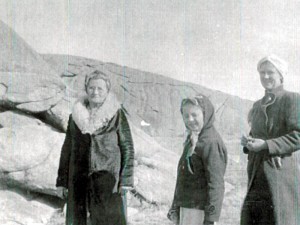 because I think many of us would, except that for a time you weren’t allowed to climb the rock to see the names recorded there. It was a little glitch in people’s thinking I think, and it made Independence Rock a lot less interesting to this generation. The time when climbing on the rock was prohibited came about because they didn’t want footsteps to kill the lichen, but I think they have changed that now, because the lichen was obscuring the names, and defacing the rock in it’s own way. I don’t go there much these days, but it will always hold a place in my memory files, because of all the fun we had there when Dad would take us to learn about history.
because I think many of us would, except that for a time you weren’t allowed to climb the rock to see the names recorded there. It was a little glitch in people’s thinking I think, and it made Independence Rock a lot less interesting to this generation. The time when climbing on the rock was prohibited came about because they didn’t want footsteps to kill the lichen, but I think they have changed that now, because the lichen was obscuring the names, and defacing the rock in it’s own way. I don’t go there much these days, but it will always hold a place in my memory files, because of all the fun we had there when Dad would take us to learn about history.![]()
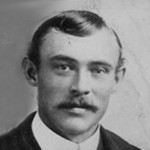 Recently, my interest turned to the ancestry of the Schulenberg side of my family, when I was contacted by a more famous member of the family, who I will not name at this point, as I have not asked his permission to do so, and so I will respect his privacy. He wondered if we might be related, and I told him that I expected that we probably are. Since that time, I have been looking back on that side of the family. I knew that our side of the Schulenberg family came to America aboard the SS Moltke in 1895, when Max Heinrich Johann Carl Schulenberg arrived on that ship at the tender age of 17 years, without an adult to accompany him…a bold move for a young man. He arrived in New York City, like so many other immigrants. Before too long he had made his way to Blair,Nebraska, where he met and married Julia Doll on December 16, 1902. The couple would have ten children, the oldest of which was Andrew, my husband, Bob’s grandfather. The family would eventually settle in Forsyth, Montana, where there are still family members living to this day.
Recently, my interest turned to the ancestry of the Schulenberg side of my family, when I was contacted by a more famous member of the family, who I will not name at this point, as I have not asked his permission to do so, and so I will respect his privacy. He wondered if we might be related, and I told him that I expected that we probably are. Since that time, I have been looking back on that side of the family. I knew that our side of the Schulenberg family came to America aboard the SS Moltke in 1895, when Max Heinrich Johann Carl Schulenberg arrived on that ship at the tender age of 17 years, without an adult to accompany him…a bold move for a young man. He arrived in New York City, like so many other immigrants. Before too long he had made his way to Blair,Nebraska, where he met and married Julia Doll on December 16, 1902. The couple would have ten children, the oldest of which was Andrew, my husband, Bob’s grandfather. The family would eventually settle in Forsyth, Montana, where there are still family members living to this day.
But what of the German half of the Schulenberg family. They had a longstanding heritage in Oldenburg, Germany, where the family owned a farm since 1705, when the first known Schulenberg owner,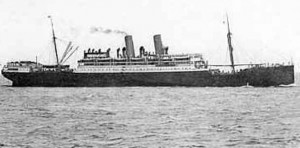 Johann Schulenberg shows up in records as the owner. The farm was rather large and still stands to this day. It has been well maintained, and is in fact, more beautiful today than it was when Johann owned it. I’m sure that has to do with all the modern equipment and products we have today to enhance the natural beauty of a home and its grounds. Nevertheless, the farm was a productive place in 1705 too.
Johann Schulenberg shows up in records as the owner. The farm was rather large and still stands to this day. It has been well maintained, and is in fact, more beautiful today than it was when Johann owned it. I’m sure that has to do with all the modern equipment and products we have today to enhance the natural beauty of a home and its grounds. Nevertheless, the farm was a productive place in 1705 too.
The furthest record of the family line that I have found to date is Vitter Schulenberg, who actually hailed from Schulenberg, Germany, where I expect the family originated, because as most of us know, before last names existed, people were known by the town they came from, such as Jesus of Nazareth. The Schulenberg family had been known in prior years as von der Schulenberg, which translates from Schulenberg, meaning the town of Schulenberg, Germany which is located in the district of Goslar in Lower Saxony, Germany, I don’t know if those people whose last name is spelled Schulenburg came from the same family or not, but I would expect that it is quite likely, because when people came to America, they were told to 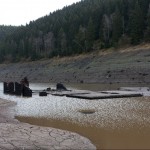 Americanize their name, and there was no regulation as to how to do that, so some went one way and others went another way.
Americanize their name, and there was no regulation as to how to do that, so some went one way and others went another way.
I also found out that there was an older village of Schulenberg, which only appears in the fall, when the lake is at its lowest point. The lake (der Okertalsperre) or reservoir which was constructed in 1953, resulting in the flooding of the old village. That fascinated me. I found this picture of the ruins on Google Earth (taken by Harz Geist), and either there is not much left of the old village, or it was very small, which almost makes me wonder if it was originally a farm named Schulenberg, that grew into a village…but that is the subject of another story, for another day.
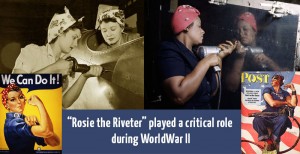 During World War II, when many of the men were involved in the fighting over seas, a group of women stepped up and filled the gap as welders working in the bomber plants. They became known as Rosie the Riveter, and there were thousands of them. It really became a movement of female empowerment, and I don’t know how the war would have gone without them. It was a movement of solidarity. They worked to keep the American Army Air Forces in much needed bombers. There were men who were riveters too, including my Uncle Bill Spencer, who was turned down for the service because of flat feet and a hernia, but most of them were women, and they
During World War II, when many of the men were involved in the fighting over seas, a group of women stepped up and filled the gap as welders working in the bomber plants. They became known as Rosie the Riveter, and there were thousands of them. It really became a movement of female empowerment, and I don’t know how the war would have gone without them. It was a movement of solidarity. They worked to keep the American Army Air Forces in much needed bombers. There were men who were riveters too, including my Uncle Bill Spencer, who was turned down for the service because of flat feet and a hernia, but most of them were women, and they 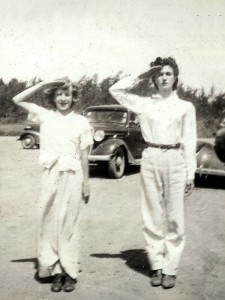 included my Aunt Laura Spencer and my Aunt Ruth Spencer. It was a time when it was all hands on deck…our fighting airmen needed our help and support. One of those fighting airmen was my dad, Allen Spencer, brother to Laura, Bill, and Ruth. I’m sure it seemed to them, the best way they could help their brother, and all the other airmen.
included my Aunt Laura Spencer and my Aunt Ruth Spencer. It was a time when it was all hands on deck…our fighting airmen needed our help and support. One of those fighting airmen was my dad, Allen Spencer, brother to Laura, Bill, and Ruth. I’m sure it seemed to them, the best way they could help their brother, and all the other airmen.
The other day, I came across an article in the paper about the Willow Run bomber plant in Willow Run, Michigan. It would seem that this little slice of history is set to go on the chopping block. I suppose that not every historic landmark can be saved, but it seems such a horrible shame to tear down a building that marked such a heroic effort by so many people, to stand behind a nation at war, by meeting such an enormous need. Between 1942 and 1945, crews numbering tens of thousands built roughly one B-24 Liberator an hour…8,685 in all. There were women all over the country performing the work that had always been done by men, but at the Willow Run plant, one Rose Will Monroe worked alongside 40,000 other workers…mostly women…and soon she became the trademark…Rosie the Riveter. Before long, 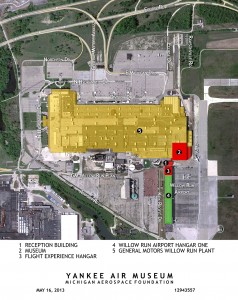 all those women were known as Rosie the Riveters…and they considered it an honor to bear the title.
all those women were known as Rosie the Riveters…and they considered it an honor to bear the title.
Now, the Willow Run bomber plant is in peril. Those who remember the trademark Rosies, want to keep their history alive, but in order to do so, they need 8 million dollars. They don’t have much time to raise the money. They are at a remarkable 7.23 million dollars right now. To me it would be a horrible shame to let this little slice of history be destroyed. I feel like it is so uncharacteristic of this nation to forget the efforts of our heroes in any area of American life. It is my hope that this historic landmark can be saved, so that our children, and our children’s children can see what can be accomplished when we work together. More information on this can be found at Save The Willow Run Bomber Plant.
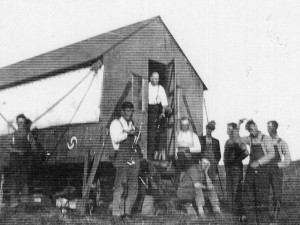 Yesterday, I came across some old pictures from my mom’s side of the family, and as I looked at the list Aunt Sandy had given me, I had to do a double take. It wouldn’t seem like it was such a big deal, because it just a picture of some unnamed ranch hands from the Flying U Ranch in Rushville, Nebraska. To someone who didn’t know anything about Rushville, Nebraska, this find would be nothing really, but I do know a little bit about Rushville, Nebraska, although I don’t recall ever having been there. I’m sure that seems odd…I mean, how could I know anything about this place if I haven’t ever been there? I could have studied about it I suppose, but for me, it is more about the people who were there at a certain time in history, than it is about the place itself.
Yesterday, I came across some old pictures from my mom’s side of the family, and as I looked at the list Aunt Sandy had given me, I had to do a double take. It wouldn’t seem like it was such a big deal, because it just a picture of some unnamed ranch hands from the Flying U Ranch in Rushville, Nebraska. To someone who didn’t know anything about Rushville, Nebraska, this find would be nothing really, but I do know a little bit about Rushville, Nebraska, although I don’t recall ever having been there. I’m sure that seems odd…I mean, how could I know anything about this place if I haven’t ever been there? I could have studied about it I suppose, but for me, it is more about the people who were there at a certain time in history, than it is about the place itself.
I have long known that some of my dad’s family settled in Rushville, Nebraska. In fact, I have written about them several times. My dad’s Great Aunt Theresa Elizabeth Spencer and her husband, William Jonathan Davis lived most of their married life in Rushville, Nebraska, and had a big ranch there. Several of their children also had ranches in the area. The name of the Davis ranch was Pine Creek, and interestingly enough, it is currently for sale, with 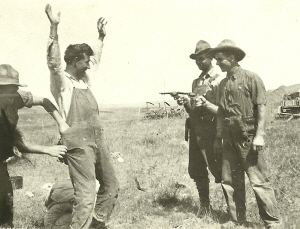 an asking price of $795,000.00, a fact that I found a bit sad, because it is a bit of my family history, and it will soon be owned by someone new, if it wasn’t already.
an asking price of $795,000.00, a fact that I found a bit sad, because it is a bit of my family history, and it will soon be owned by someone new, if it wasn’t already.
I haven’t been able to find the Flying U Ranch so far, but I know that it is…or was…in the Rushville, Nebraska area. The Flying U Ranch was not owned by my mom’s family, but it could have been. The couple who owned the ranch was getting older, and they apparently didn’t have children or children who were still living or able to take over the ranch. They really liked my grandfather, George Byer, and they told him that if he would stay there, in Rushville, they would deed the ranch to him upon their deaths. I don’t know if Grandpa didn’t like the area, or if he thought it was too long to wait and not know when he would inherit the ranch, or if he didn’t really like the ranching life, but for whatever reason, he chose not to take them up on that generous offer. I’m sure they were sorry that he didn’t, but I don’t know who they eventually gave the ranch to or if they sold it, but it did not end up in our family.
As for me, the questions that remain, are more along the lines of…Did Grandpa ever regret his decision to pass on the Flying U Ranch?…and Did he know some of the Davis family, thereby tying  the two sides of my family together long before the marriage of my parents in 1953. He obviously had some great times on the Flying U Ranch…after all, it was there that he and some of the ranch hands took pictures of their staged robbery. They must have enjoyed spending time together just goofing off. I also have to wonder how our lives might have been different, had Grandpa taken on the Flying U ranch? I had never really considered what it might have been like if we had descended from a rancher. I don’t know that I would change anything about my life, even if I could, but it is interesting to look at the possibilities when one reflects on the fact that it really is a small world.
the two sides of my family together long before the marriage of my parents in 1953. He obviously had some great times on the Flying U Ranch…after all, it was there that he and some of the ranch hands took pictures of their staged robbery. They must have enjoyed spending time together just goofing off. I also have to wonder how our lives might have been different, had Grandpa taken on the Flying U ranch? I had never really considered what it might have been like if we had descended from a rancher. I don’t know that I would change anything about my life, even if I could, but it is interesting to look at the possibilities when one reflects on the fact that it really is a small world.
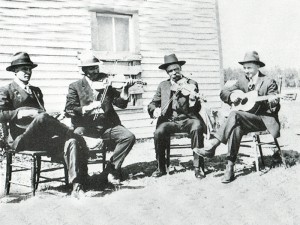 Many years ago, radios were not as common, and could not be used outside the home, so when families would gather together for a dinner or dance, music by radio was not really an option. I think people probably learned to play instruments so they could entertain themselves and others. Music has been a part of my family’s heritage for a far back as I have been able to trace, but it has taken many different twists and turns. This picture is one of my Uncle Bill’s favorites. He calls it “The Musicians”, which is exactly what it is, but it was named with a little mix of respect and sentiment that said what a special thing Uncle Bill thought the little group was. My grandfather
Many years ago, radios were not as common, and could not be used outside the home, so when families would gather together for a dinner or dance, music by radio was not really an option. I think people probably learned to play instruments so they could entertain themselves and others. Music has been a part of my family’s heritage for a far back as I have been able to trace, but it has taken many different twists and turns. This picture is one of my Uncle Bill’s favorites. He calls it “The Musicians”, which is exactly what it is, but it was named with a little mix of respect and sentiment that said what a special thing Uncle Bill thought the little group was. My grandfather 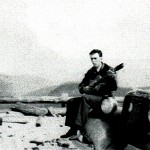 had taught each of his kids to play the violin, so they knew what it took to play music. It took a lot of practice and if you were going to play at dances and such, you had to pack all of your equipment and go to where the dance was and play, often late, then pack up and go home…all in a covered wagon way back then.
had taught each of his kids to play the violin, so they knew what it took to play music. It took a lot of practice and if you were going to play at dances and such, you had to pack all of your equipment and go to where the dance was and play, often late, then pack up and go home…all in a covered wagon way back then.
Nevertheless, even with all of the work and such, musicians who really loved what they did, made the sacrifice, and the rest of the people were glad, because a good band can be hard to find. Barn dances, square dances, and other such functions would not be the same without the musicians who made them possible. Those barn dances were the thing that the people looked forward to all week, or sometimes all month. It was like out going to a show these days. If you didn’t get to go, and it was planned, you were really bummed out.
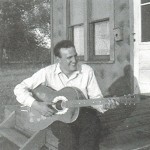
I remember taking square dancing in school, and how much we hated that, but to those people, it was the latest thing. When you think about it, square dancing probably was the start of the line dancing of today, just like the music was the beginning of some of the music of today…at least the country music. It’s funny how much music has changed over the years, and yet really the musicians have not changed all that much…other than in looks. They still devote a lot of time to practice and work really hard to perfect their art. Whether it is country, contemporary, or even rock, being a good musician takes a lot of dedication in order to become great.
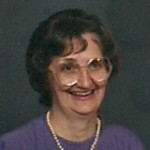 My Aunt Deloris…Aunt Dee to all of her nieces and nephews, was such a happy person. It never seemed to matter what might be going on in her life. She didn’t allow her happiness to depend on whether or not everything was perfect in her day. In fact, I truly don’t remember a time when I saw my Aunt Dee, that she was not smiling. That is a very special thing to say about a person, because not all of us can be known for our smile or our happy personality. I never knew my aunt as a young girl, because she was already a grown woman with children of her own by the time I came on the scene. Nevertheless, I have been looking at pictures of her in her younger days, and I think she was always that way. She loved people, especially her family, and just being alive.
My Aunt Deloris…Aunt Dee to all of her nieces and nephews, was such a happy person. It never seemed to matter what might be going on in her life. She didn’t allow her happiness to depend on whether or not everything was perfect in her day. In fact, I truly don’t remember a time when I saw my Aunt Dee, that she was not smiling. That is a very special thing to say about a person, because not all of us can be known for our smile or our happy personality. I never knew my aunt as a young girl, because she was already a grown woman with children of her own by the time I came on the scene. Nevertheless, I have been looking at pictures of her in her younger days, and I think she was always that way. She loved people, especially her family, and just being alive.
I have to think, however, 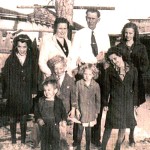 that Aunt Dee might have been a little bit shy when she was a girl. At lease that is how she looked to me. As I look at the family pictures she is in, I noticed that her demeanor seems to be happy, but just a little bit timid. Maybe it was just her being humble minded, which is never a bad thing, and really, an endearing trait to have. I don’t think Aunt Dee ever thought of herself as anyone special, but I did. I loved having her come over to our house, because she was always like a ray of sunshine. She never had an attitude of greatness, which in my opinion just goes to show how great she really was…she just didn’t seem to know that. How could that be? I mean, we could all see it, but she could not. It was just her way. Hers was a behind the scenes greatness.
that Aunt Dee might have been a little bit shy when she was a girl. At lease that is how she looked to me. As I look at the family pictures she is in, I noticed that her demeanor seems to be happy, but just a little bit timid. Maybe it was just her being humble minded, which is never a bad thing, and really, an endearing trait to have. I don’t think Aunt Dee ever thought of herself as anyone special, but I did. I loved having her come over to our house, because she was always like a ray of sunshine. She never had an attitude of greatness, which in my opinion just goes to show how great she really was…she just didn’t seem to know that. How could that be? I mean, we could all see it, but she could not. It was just her way. Hers was a behind the scenes greatness.
Nevertheless, if you asked all the people who knew her, I’ll bet that every one of them could 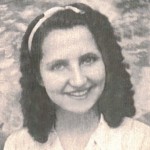 tell you about some of the many special things she did for people…like the piano she bought for the family, and teaching her siblings to dance, or my mom to fly…at least as much as you could using the wind and your coat as wings. She was a friend you wanted to call yours. She was such a kindhearted woman, and yet she took no credit for what she did for people. She was more the Wind Beneath Your Wings kind of gal. I will always remember her sweet smiling face. Aunt Dee left us on October 6, 1996, when Brain Cancer stole her sweet smile from us. Today would have been Aunt Dee’s 82nd birthday!! Happy birthday in Heaven Aunt Dee!! We love and miss you always.
tell you about some of the many special things she did for people…like the piano she bought for the family, and teaching her siblings to dance, or my mom to fly…at least as much as you could using the wind and your coat as wings. She was a friend you wanted to call yours. She was such a kindhearted woman, and yet she took no credit for what she did for people. She was more the Wind Beneath Your Wings kind of gal. I will always remember her sweet smiling face. Aunt Dee left us on October 6, 1996, when Brain Cancer stole her sweet smile from us. Today would have been Aunt Dee’s 82nd birthday!! Happy birthday in Heaven Aunt Dee!! We love and miss you always.
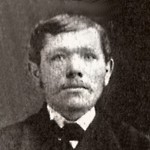 On this, the 130th anniversary of the arrival of my great grandfather, Carl Ludwig Theodor Schumacher in the United States, I have been thinking about how it must have felt for him. He had made the most difficult decision to leave his homeland at the very young age of 25, and board the SS Gellert, leaving from Hamburg, Germany on April 6, 1884 to start a new life, far away from his parents and family in the United States of America. He had been reading letters from his uncle and cousins about how wonderful America was, and in particular, how wonderful Minnesota was, since he was 18, and he had made up his mind to go. He would work seven long years taking care of the horses of a wealthy landowner to earn the $50.00 needed to pay his fare. He knew that travel by ship across the Atlantic could be dangerous, and he might be very homesick for his family, but he was determined to go. He knew, also that it would take years of hard work to build the American Dream that he had in mind for his life. My great grandfather would be successful in building his American Dream, but today my thoughts go not to thinking of his dreams, but rather to how he must have felt as he made such a life change.
On this, the 130th anniversary of the arrival of my great grandfather, Carl Ludwig Theodor Schumacher in the United States, I have been thinking about how it must have felt for him. He had made the most difficult decision to leave his homeland at the very young age of 25, and board the SS Gellert, leaving from Hamburg, Germany on April 6, 1884 to start a new life, far away from his parents and family in the United States of America. He had been reading letters from his uncle and cousins about how wonderful America was, and in particular, how wonderful Minnesota was, since he was 18, and he had made up his mind to go. He would work seven long years taking care of the horses of a wealthy landowner to earn the $50.00 needed to pay his fare. He knew that travel by ship across the Atlantic could be dangerous, and he might be very homesick for his family, but he was determined to go. He knew, also that it would take years of hard work to build the American Dream that he had in mind for his life. My great grandfather would be successful in building his American Dream, but today my thoughts go not to thinking of his dreams, but rather to how he must have felt as he made such a life change.
A young man of 25 years is really not so grown up that a move half a world away doesn’t feel scary. That kind of a move would be a daunting experience for anyone, no matter how 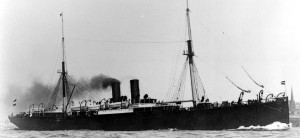 old they are. And then to arrive at a place like Ellis Island, or in my grandfather’s case, Castle Garden, since the Ellis Island facility wasn’t built until 1892…not really knowing what you would be put through before you would be allowed to enter the United States. Many people were required to Americanize their names, so it would be easier for them to fit in…forever altering their identity. That was the case for my great grandfather, when his name was changed from Schuhmacher to Schumacher. Still, the immigrants felt like this was a small sacrifice to make for the gain of the American Dream, and in fact, many immigrants felt like that name change was like a rite of passage into this great country.
old they are. And then to arrive at a place like Ellis Island, or in my grandfather’s case, Castle Garden, since the Ellis Island facility wasn’t built until 1892…not really knowing what you would be put through before you would be allowed to enter the United States. Many people were required to Americanize their names, so it would be easier for them to fit in…forever altering their identity. That was the case for my great grandfather, when his name was changed from Schuhmacher to Schumacher. Still, the immigrants felt like this was a small sacrifice to make for the gain of the American Dream, and in fact, many immigrants felt like that name change was like a rite of passage into this great country.
Nevertheless, I can’t help but feel that my grandfather must have felt some level of sadness at the change of his name, even though he would use it again when he was married. Still, the census records, and other records show it as Schumacher, thus muddying the waters when it comes to genealogy records. I don’t suppose that was the 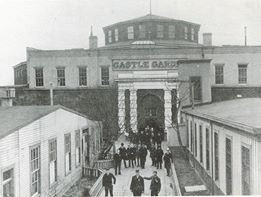 thing my great grandfather was thinking about as he waited for his turn at Castle Garden on April 21, 1884, but as my mind looks back in time to that day that would end up being so very important to my life, it is something that definitely occurs to me. My great grandfather had been through so much to come to this new land filled with opportunity, and I’m quite certain that the overwhelming changes must have made him quite weary, but as he arrived in Minnesota and began the work of building that dream, I suppose that all of the uncertainty of the journey to get where he was, became simply a distant memory. He was home…the home of his dreams.
thing my great grandfather was thinking about as he waited for his turn at Castle Garden on April 21, 1884, but as my mind looks back in time to that day that would end up being so very important to my life, it is something that definitely occurs to me. My great grandfather had been through so much to come to this new land filled with opportunity, and I’m quite certain that the overwhelming changes must have made him quite weary, but as he arrived in Minnesota and began the work of building that dream, I suppose that all of the uncertainty of the journey to get where he was, became simply a distant memory. He was home…the home of his dreams.

